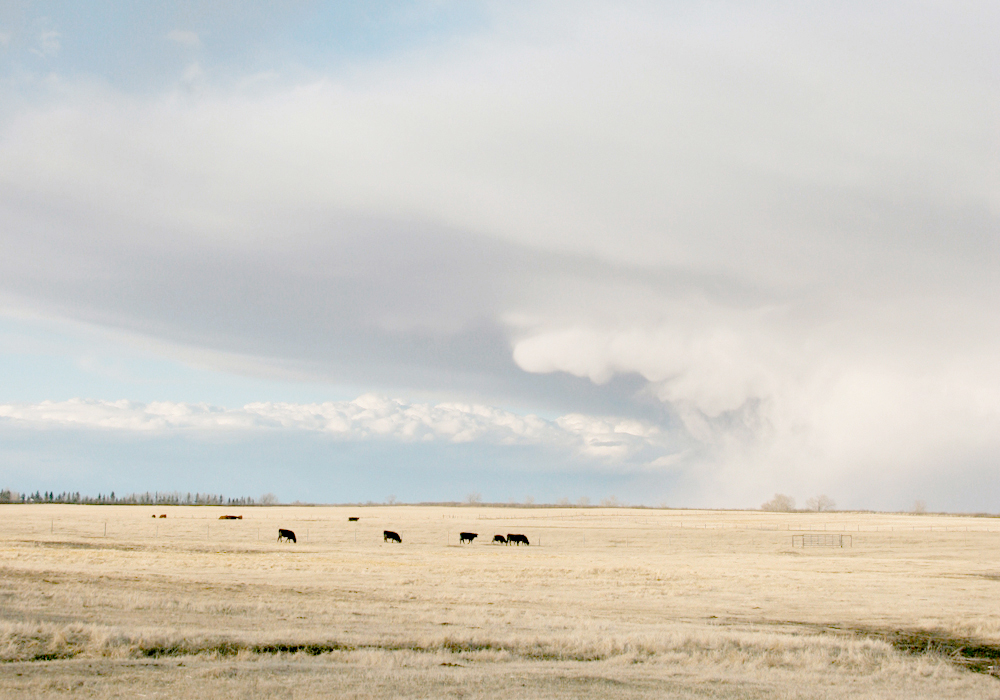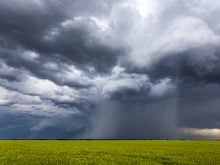Extreme rainfall events can be caused by one factor if it’s strong enough, but most times, it needs several factors to come together.
The first factor is atmospheric moisture. For very extreme rainfall events, we need the atmospheric moisture to be deep; that is, a large portion of the atmosphere is moist.
This deep moisture is referred to as “precipitable water” and is measured by stating the amount of rainfall that would occur if all the moisture over a region fell at once as rain. But as we know, there can be plenty of moisture in place and we still won’t see an extreme rainfall.
Read Also

Drones now used to assess wildlife crop damage in Saskatchewan
Wildlife damage in Saskatchewan crops is now assessed by drones and artificial intelligence.
A second key component to making extreme rainfall happen is atmospheric instability. This refers to the condition in which warm, moist air at the surface is overlaid by cooler, drier air aloft. This creates an environment conducive to development of thunderstorms and heavy rain. As the sun warms the surface, it heats the surrounding air and it rises. This rising air will cool, but if it cools slower than the surrounding atmosphere, the air will continue to rise, eventually cooling to where condensation will occur.
As that air rises, new air moves in horizontally, which is also full of moisture. That air will eventually rise, bringing even more moisture into the upper atmosphere to condense.
The next factor is confined to certain parts of the Prairies, such as the Manitoba escarpment, and further west, the Rocky Mountains. It is topography and orographic lift.
The Prairies are flat, but there can be variations in terrain that influence the behaviour of storm systems. Even subtle changes in elevation, such as low hills or ridges, can play a role in enhancing rainfall. When moist air is forced to rise over elevated features, a process known as orographic lift occurs. As the air is lifted, it cools and condenses, leading to cloud formation and precipitation. This effect can enhance rainfall over certain areas of the Prairies in the path of prevailing winds.
This occurs in Manitoba around the Dauphin-Riding Mountain region, but it is especially evident in Alberta when easterly winds push up against the Rocky Mountains. This is one of the leading reasons behind the epic floods that hit southwestern Alberta in 2013.
The next big factor that contributes to extreme rainfall is storm dynamics. Rainfall events come from different storm systems, such as fronts, areas of low pressure and convective thunderstorms. Each of these storm systems can potentially produce extreme rainfall, depending on how they behave. The behaviour that contributes the most to extreme rainfall events is the speed at which they are moving. The slower the system, the greater the chance of heavy rain.
Training is when a series of thunderstorms form and move over the same region. One storm will develop and bring heavy rain, and as it moves off, a second storm quickly develops and moves in to replace the first storm, and so on. From the ground, it will often seem like it is just one big storm that keeps on going.
The last factor we’ll examine is convergence zones. These are areas where winds from different directions converge, forcing air to rise. These zones can act as focal points for storm development and can lead to the formation of heavy rain-producing thunderstorms.
In the next issue we will finish up our look at heavy or extreme rainfall events by examining the last factor — climate patterns. This is the topic that is currently making the headlines. We will then tie all these factors together to try and create an overall big picture.
Daniel Bezte is a teacher by profession with a BA in geography, specializing in climatology, from the University of Winnipeg. He operates a computerized weather station near Birds Hill Park, Man. Contact him at dmgbezte@gmail.com.
















